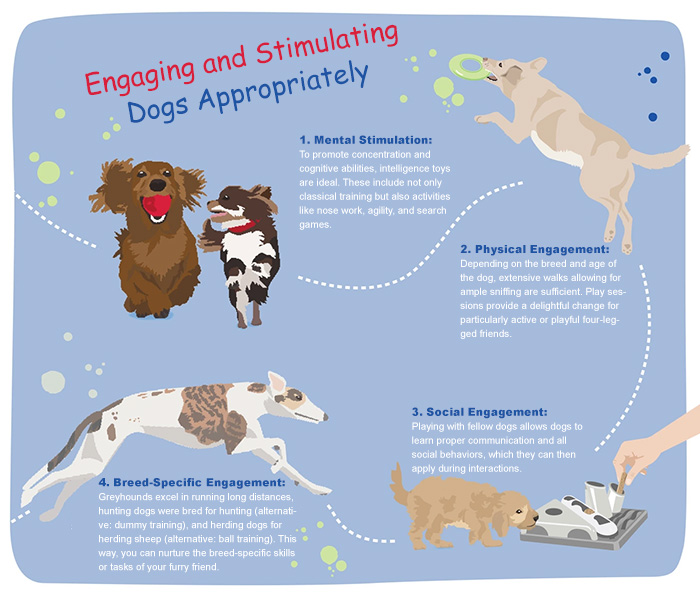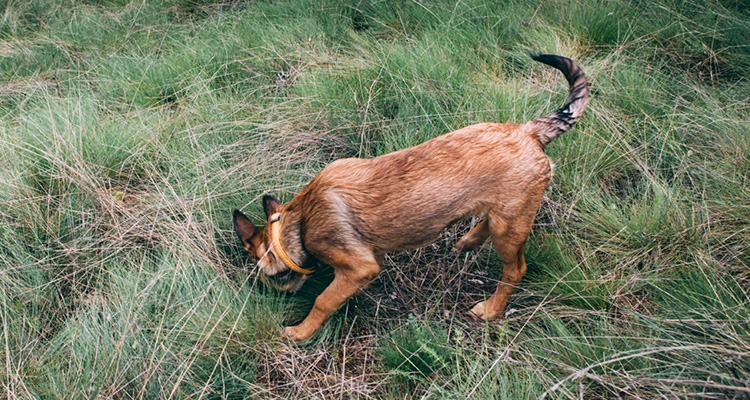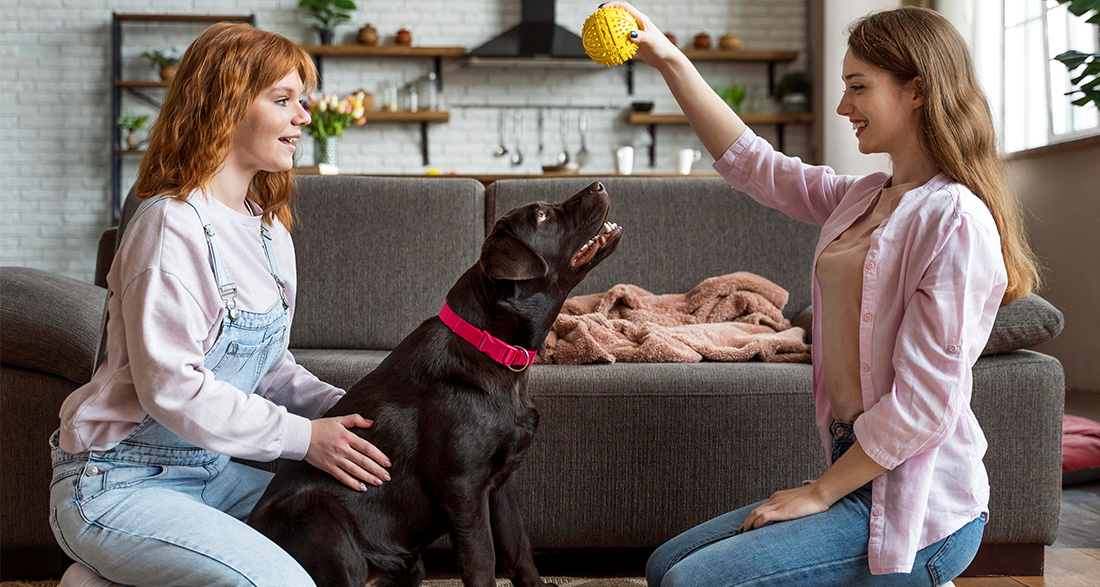As a dedicated dog owner, you often come across the terms “species-appropriate engagement” and “canine enrichment,” usually followed by a plethora of activity suggestions for your furry friend. But which ones are right for your dog, and what do these terms actually mean? Let’s delve into that here.
- What does species-appropriate engagement and canine enrichment mean?
- How to mentally stimulate your dog?
- What constitutes the right physical activity?
- How to facilitate social engagement?
- How much breed-specific engagement does your dog need?
- How to tell if your dog is bored or overwhelmed?
- How much time do you need to allocate?
What does species-appropriate engagement and canine enrichment mean?
In this context, the terms engagement and enrichment are often taken too literally. It’s not about keeping your dog busy until exhaustion sets in. The beautiful term “canine enrichment” is used in English, emphasizing the enrichment of a dog’s life. It involves filling a dog’s daily routine with options that allow them to unfold within their natural behavior spectrum. Practicing natural behaviors is crucial to fulfilling your dog’s basic needs.
A meaningful engagement strategy is based on four pillars:

- Mental Stimulation: To promote concentration and cognitive abilities, intelligence toys are ideal. These include not only classical training but also activities like nose work, agility, and search games.
- Breed-Specific Engagement: Greyhounds excel in running long distances, hunting dogs were bred for hunting (alternative: dummy training), and herding dogs for herding sheep (alternative: treibball training). This way, you can nurture the breed-specific skills or tasks of your furry friend.
- Social Engagement: Playing with fellow dogs allows dogs to learn proper communication and all social behaviors, which they can then apply during interactions.
- Physical Engagement: Depending on the breed and age of the dog, extensive walks allowing for ample sniffing are sufficient. Play sessions provide a delightful change for particularly active or playful four-legged friends.
Ideally, these four components work together like gears. And don’t worry, it doesn’t have to be overly complicated! Natural behaviors of our domestic dogs include activities such as running, digging, rolling, chasing, tracking scents, working for food, defending territories, playing with fellow dogs, and, of course, long, restful sleeps. Your dog doesn’t expect you to provide a 24/7 entertainment program.
As the pack leader, what your dog wishes for is that you integrate tasks into your daily life that they can solve with their abilities, granting them the freedom to be a dog, all within a pack where they know their place.
How to mentally stimulate your dog?

Dogs remain curious creatures throughout their lives, capable of developing remarkable problem-solving strategies. If we don’t nurture their cognitive abilities, they may stagnate. Mental stimulation involves presenting your dog with tasks they can solve. Integrate small challenges into your dog’s daily routine, such as home-based games like nose work, fetching, intelligence and agility games, search games, hide-and-seek, and any training situations that allow them to think and make choices.
The fascinating aspect of dogs’ problem-solving strategies is that they often involve cooperation with humans. Dogs actively seek their owner’s assistance, interpreting human facial expressions and gestures exceptionally well. That’s why playing with dogs is so enjoyable. Mental stimulation not only brings joy but also keeps them mentally fit, potentially delaying the onset and progression of dementia-like symptoms in old age.
What constitutes the right physical activity?
Two factors significantly determine the answer: your dog’s health and age. While it’s true that seniors don’t need to engage in extreme sports, insufficient activity can lead to muscle atrophy and inadequate joint movement. The key is finding the right balance. It’s not about exhausting the dog until they collapse but moving them appropriately.
An extensive walk in nature, preferably without a leash, often suffices for healthy dogs. Some dogs may enjoy running alongside a bicycle or swimming in cool water.
How to facilitate social engagement?

A happy dog’s life includes interaction with fellow canines. If having a second dog is not an option, it’s essential to help your dog find other four-legged playmates. Communication and behavior among dogs require practice!
If your dog spends too little time with other dogs, they may misinterpret canine body language and react with fear or aggression. If you don’t know compatible dogs in your area, social media groups often organize dog meet-ups for joint activities.
How much breed-specific engagement does your dog need?
Your dog is breed-specifically engaged when they can participate in activities for which they were originally bred. Since this is often challenging, it’s up to you to find suitable alternatives. A Retriever may enjoy fetch games or dummy training, a Husky might love dog sledding, and a herding dog may thrive on activities like Treibball.
Setting up a playdate with a dog of the same breed can also be beneficial. Greyhounds enjoy running games, Terriers love digging games with a touch of playful growling, and Boxers adore ball and tug-of-war games.
For some working breeds, finding genuine alternatives can be challenging. For instance, herding dogs instinctively want to independently secure a herd and territory, a scenario that is hard to replicate. In the interest of the animals, refrain from acquiring a dog if you cannot provide them with a species-appropriate life.
How to tell if your dog is bored or overwhelmed?
Insufficient mental stimulation or excessive constant excitement can manifest in behavioral changes. Interestingly, signs of boredom and frustration often overlap with those of overwhelm and overstimulation.
Behaviors indicating boredom or overwhelm include:
- Hyperactivity and difficulty calming down
- Excessive barking without cause
- Overattachment
- Impulsive behavior, irritability, and low patience
- Ignoring your calls and seeking independent adventures
- Licking or nibbling paws or other body parts
- Destructive behavior towards furniture and objects
- Displaying stereotypical behaviors like chasing their tail
- Lethargy and a depressed appearance
- Changes in appetite and poor recovery after stressful situations
Note
Medical reasons can also cause these behaviors. If in doubt, always consult your veterinarian.
How much time do you need to allocate?
There’s no one-size-fits-all answer, given the diverse needs of individual breeds and, not to forget, individual dog personalities. It’s crucial to schedule fixed times for your canine companion in your daily routine.
Three walks totaling at least two hours are a good starting point. Make time for play sessions and trust your instincts. And don’t forget the cuddle times! Lounging ranks high on the list of canine hobbies: your dog sleeps 12-14 hours a day. After all these experiences, there comes a time for processing them!


